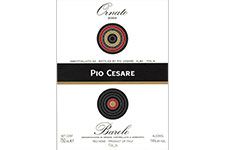
Pio Cesare
Pio Cesare
Biography
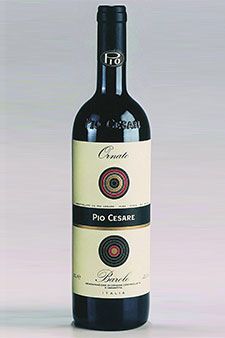
In the cellars which Cesare Pio founded in Alba in 1881 time seems to have stood still. Even if the cellars have been renovated and restructured to bring out all of their historic and architectural importance, it is there, in the sole cellars which have remained in the center of Alba, that for five generations the family of the founder ferments and ages the grapes of the Langhe. To tell the truth, time has not at all stopped: on the contrary, the current proprietor, Pio Boffa, has not hesitated to change what he no longer thought useful, even if he inherited the firm from his great-great-grandmother on his mother’s side. Cesare Pio did not own vineyards: he purchased grapes from growers and fermented them. When he became part of the firm 25 years ago, Pio Boffa realized that it was indispensable to own, and cultivate under his own direction, proprietary vineyards: young cultivators, attracted by factory work, were abandoning the Langhe hills and moving to the city. He had a decisive role in convincing his father to acquire the Bricco estate in Treiso (in the Barbaresco appellation) and the Ornato vineyards at Serralunga d’Alba in the Barolo zone. Purchased, respectively, in 1974 and 1979 from former growers who conferred their grapes to the house, they are two authentic crus. Since then Pio Boffa has permanently revolutionized the work of the house, but it was a revolution imposed with the maximum discretion. The most traumatic decision was taken in 1985 when he selected the finest grapes of Serralunga d’Alba and fermented them on their own. For over a century Pio Cesare had blended the grapes of different vineyards for its Barolo in order to use some lots for body, others for fragrance, still others for color: this was the first time that the century old house produced, not a Barolo, but a Barolo Ornato, a Barolo cru. That there was some worry that this decision might disturb a part of the clientele is something Pio Boffa does not deny, but Ornato was one of the firm’s greatest successes. Accordingly, in another great vintage, 1990, the Barbaresco Bricco made its debut, produced from the grapes of the vineyards of the estate in Treiso, and yet another cru.
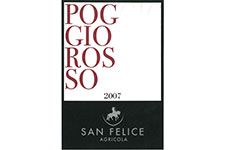
San Felice
San Felice
Biography
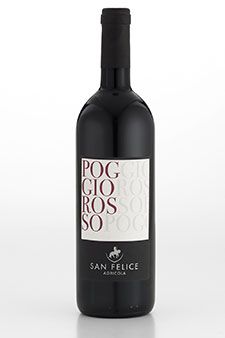
The most surprising aspect of San Felice is the simple fact that it belongs to a large insurance company, Riunione Adriatica di Sicurtà, better known as RAS, and does not have the charismatic figure of an entrepreneur to represent it. Yet it has succeeded, all the same, to create an important position for itself in the world of quality wine. This is due to an extraordinary person, whose life was unfortunately cut short at a relatively early age, Enzo Morganti, to whom RAS, some thirty years ago, assigned the duties of director of viticultural operations. The enterprise began in 1978 when the historic estate of San Felice, situated just a few miles from Siena in the southeastern part of the Chianti Classico production zone, was purchased by a pharmaceutical company, Aesculapius Kaloderma. Centuries ago the estate was part of the Pieve of San Felice in Avane, and was disputed by the bishops of the cities of Arezzo and Siena as early as the year 714. The property was a large one, some 1500 acres in all, with 350 acres of vineyards which RAS has progressively expanded and amplified with the acquisition of other estates, the neighboring property of Pagliaia, the Campogiovanni estate in Montalcino, and Perolla in the Tuscan Maremma near the city of Grosseto. The inspired and farsighted work of Morganti had already made San Felice a vanguard winemaking estate: ten years previously, in 1968, he had created Vigorello, a barrel-aged red wine produced by native Tuscan grape varieties, principally Sangiovese, a precursor of Super Tuscan wines to come even before the birth of Tignanello. Today Vigorello, which has found its definitive formula, is a blend of Sangiovese, Cabernet Sauvignon, and Merlot, and it is not alone as the top-of-the-line wine of San Felice. It is accompanied, in fact, by two wines produced only in superior vintages: the Poggio Rosso Chianti Classico Riserva, produced from Sangiovese and Colorino, planted on the best-exposed hillside of the estate from which it takes its name, and the Brunello di Montalcino Riserva Il Quercione, which expresses all the potential of Campogiovanni’s leading vineyard site.

Tasca d'Almerita
Tasca d'Almerita
Biography
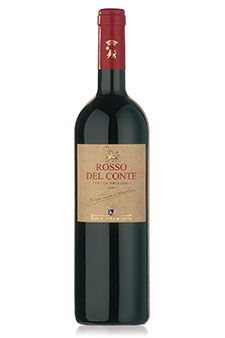
The estate was created in 1830 when brothers Lucio and Carmelo Mastrogiovanni Tasca purchased the former fiefdom of Regaleali, approximately 3,000 acres of land at Sclafani, near the border between the provinces of Palermo and Caltanissetta. It was directed in those first years by Lucio, who made it into a model estate. Regaleali has never ceased to be in the vanguard of Sicilian viticulture in its subsequent 120 years of activity when, at the end of the Second World War, the agrarian reform led to the confiscation of over a half of the original 3,000 acres, reducing the property to 1,250 acres: Count Giuseppe Tasca d’Almerita had the foresight to react vigorously and with real determination, giving wine and the vineyards a central place in operations and aiming exclusively at high quality. He was a pioneer in the cultivation with wire-trained vines, in reducing yields per hectare, and in the utilization of such native Sicilian grapes as Inzolia and Nero d’Avola. Also in experimenting, without any sense of prejudice, such international grapes as Chardonnay and Cabernet Sauvignon. Current operations are in charge of Count Lucio Tasca d’Almerita and his sons Giuseppe and Alberto: theirs was the decision to create a company, composed almost entirely of young Sicilians, which directs all of the strategic areas of production, from the budgetary matters to marketing, and sells the wine all over the world. From the heart of Sicily, from that ecological oasis which is called Regaleali, issue forth each year three million bottles of wine: four white wines, six red wines, two sparkling wines, and a dessert wine, all produced from authentic crus. Two were created by Giuseppe Tasca d’Almerita, father of Lucio: the Rosso del Conte, a Nero d’Avola perfected long before this grape variety became popular, aged in chestnut casks (which now have been replaced with oak), and Nozze d’Oro, a white wine realized to celebrate the 50th anniversary of his marriage to Baroness Franca Camarata. Among the white wines, the fleshy, elegant Chardonnay merits much attention, as does the aristocratic Cabernet Sauvignon among the reds. Increasing popular as well is the aromatic sweet wine Diamante d’Almerita, a blend of Moscato and Traminer.
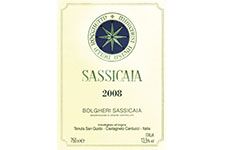
Tenuta San Guido
Tenuta San Guido
Biography
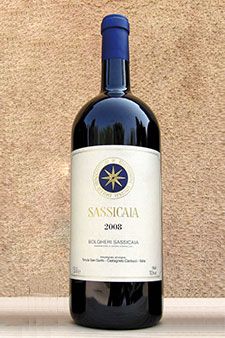
More than a mere wine, Sassicaia is a legend: it was born from Cabernet Sauvignon when this variety was not cultivated in Tuscany. It was aged in small oak barrels a quarter century before they became fashionable; and today it is the world’s best known Italian wine. And yet it does not come from a zone with a long and noble history: it was born in the Tuscan Maremma, in the place where the cypresses of Bolgheri march in a double row from San Guido towards the hamlet, thanks to the inspired hunch of marquis Mario Incisa della Rocchetta, a Piedmontese gentleman who, in 1943, after the armistice of September 8, 1943, found refuge in the vast estate inherited by his wife, Clarice della Gherardesca. There he decided to realize a dream that had come to him when he was a student at the University of Pisa: to produce on those rocky hillsides a wine with the same breed as the famed wines of Bordeaux, the wines preferred by the Italian aristocracy of that period. Incisa belonged to a Piedmont family with a noble viticultural history, but up until that time he had dedicated his time to the prestigious racing stables created in 1930 with Federico Tesio, Dormello-Olgiata, raising such legendary horses as Nearco and Ribot. In any case, he also knew how to create a fine wine: in 1944 he planted his first Cabernet Sauvignon vineyard. Then, not satisfied with the results, he planted a second one at Bolgheri in a zone called, by no means by chance, Sassicaia. To supervise the wine in the cellars, he recruited his nephew, Carlo Guerrieri Gonzaga, who had studied oenology at Lausanne. The first to become enthusiastic at the results was Luigi Veronelli, in an historic article on the 1968 vintage published in “Panorama” on November 14, 1974. And it was precisely that vintage which was the first to be marketed, and since then Sassicaia has gone from success to success. The choice of Cabernet Sauvignon and Cabernet Franc (added later) infected the entire Italian peninsula, as did the use of the barrique. It is a shame that Mario Incisa, who died at 84 years of age in 1983, leaving the direction of stables and estate to his son Niccolò, was not able to witness the final, clamorous victory of Sassicaia: the appellation with which it was rewarded in 1994 to enable the wine, finally, to roam the world as a DOC, and not as a simple “table wine”, its previous category.
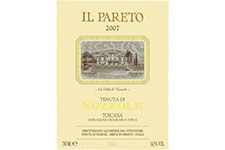
Tenute di Ambrogio e Giovanni Folonari
Tenute di Ambrogio e Giovanni Folonari
Biography
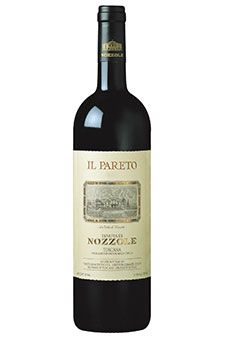
The Tenute Ambrogio and Giovanni Folonari was born from the scission in the Ruffino winery when, in the year 2000, Ambrogio Folonari and his son Giovanni, decided to concentrate on high level wine, creating a collection of well located viticultural properties, particularly in Tuscany, which produce fine wine. The Folonari family has operated in the sector of wine since the 18th century and has contributed, over the years, to the writing of important chapters in the history of Italian, particularly Tuscan, wine. The purchase of Ruffino by the grandfather of Ambrogio Folonari, Italo Folonari, goes back to 1912; though originally from Brescia, the Folonari thus began a century of entrepreneurial activity on Tuscan soil. The current operation owns Nozzole, acquired in 1971, and Cabreo, both in Greve in Chianti, Torcalvano at Montepulciano, La Fuga in Montalcino, and other properties as well: Ronco dei Folo in the Colli Orientali del Friuli appellation, Campo al Mare in Bolgheri, Tenuta Conti Spalletti at Rufina, and the Tenuta Vigne a Porrona in the promising Montecucco DOC. The labels bear the trademark of the single estates which supply the grapes for the wines, a guarantee of the origin of the various offerings. Creativity, innovation, and a precise respect for the traditions of the various territories are the core principles of the company’s work in directing these very different properties. The two wines with the greatest tradition are unquestionably Pareto di Nozzole and Cabreo il Borgo: the former is a sumptuous Cabernet of great complexity and elegance, the second a blend of Sangiovese and Cabernet, one of the original Super Tuscan wines. Pareto, produced with a lengthy 16-18 month aging in small oak barrels and a further six month period of bottle aging, austere and concentrated but, at the same time, suave and supple, is an ideal match for the great dishes of the Tuscan kitchen, roasts and game. Cabreo, instead, is a noble synthesis of the typical elegance of the most rigorously selected clones of Chianti Classico Sangiovese, and the power of Cabernet Sauvignon which, at the Zano estate near Greve in Chianti, expresses its varietal character at maximum levels.
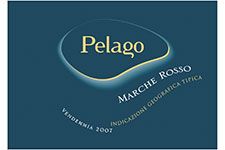
Umani Ronchi
Umani Ronchi
Biography
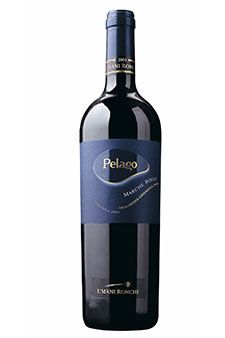
On an international scale, it is not a large winery, but by Italian standard sit Umani Ronchi of Osimo, with 500 acres of proprietary vineyards, 75 under lease, and an annual production of four million bottles, is of industrial dimensions. Industrial wineries normally do not produce fine wine, but this winery in the Marches has succeeded, and for a certain period of time, in overturning this image. How has it been accomplished? With constant high quality and at least three thoroughbred wines. One is Plinio, a Verdicchio dei Castelli di Jesi as full-bodied as its name suggests, the second, Cumaro, a Rosso Conero Riserva which is supple, harmonious, and balanced, but the third is Pelago, an unusual blend of Cabernet Sauvignon, Montepulciano, and Merlot, powerful and elegant and rather unexpected in an area known for its Verdicchio-based wines. The anomaly of Umani Ronchi is that it enjoys all of the advantages of scale of an industrial winery without succumbing to the temptation of reasoning strictly in terms of numbers, perhaps because it is still a family winery: the director of production, until now, has been Massimo Bernetti, who currently shares the tiller of command with his son Michele, sales director and responsible for foreign markets, while his uncle Stefano is in charge of the Italian market. Why does the house not bear their name? Simple: it was founded in the 1950’s at Cupramontana by Gino Umani Ronchi. But it took off only when, a few years later, the company was joined by engineer Roberto Bianchi who, in 1970, purchased total control and then passed it on to son-in-law Massimo Bernetti after moving the winery to Osimo, where it is currently headquartered. Success, according to the Bernetti, is due to three decisions: diversification in a region where mono-product firms are the rule; exports, which absorb 80% of the total production; quality, i.e. rigorous selection of the grapes, low yields per hectare, continuous controls in the laboratory, but above all constant research in the vineyards and cellar. To select clones, varieties, and training systems the Bernetti have an experimental vineyard at Villa Bianchi, the center at Moie di Maiolati where they receive guests, created by agreements with the environmental and agricultural Biotechnology Department of the University of Ancona.

